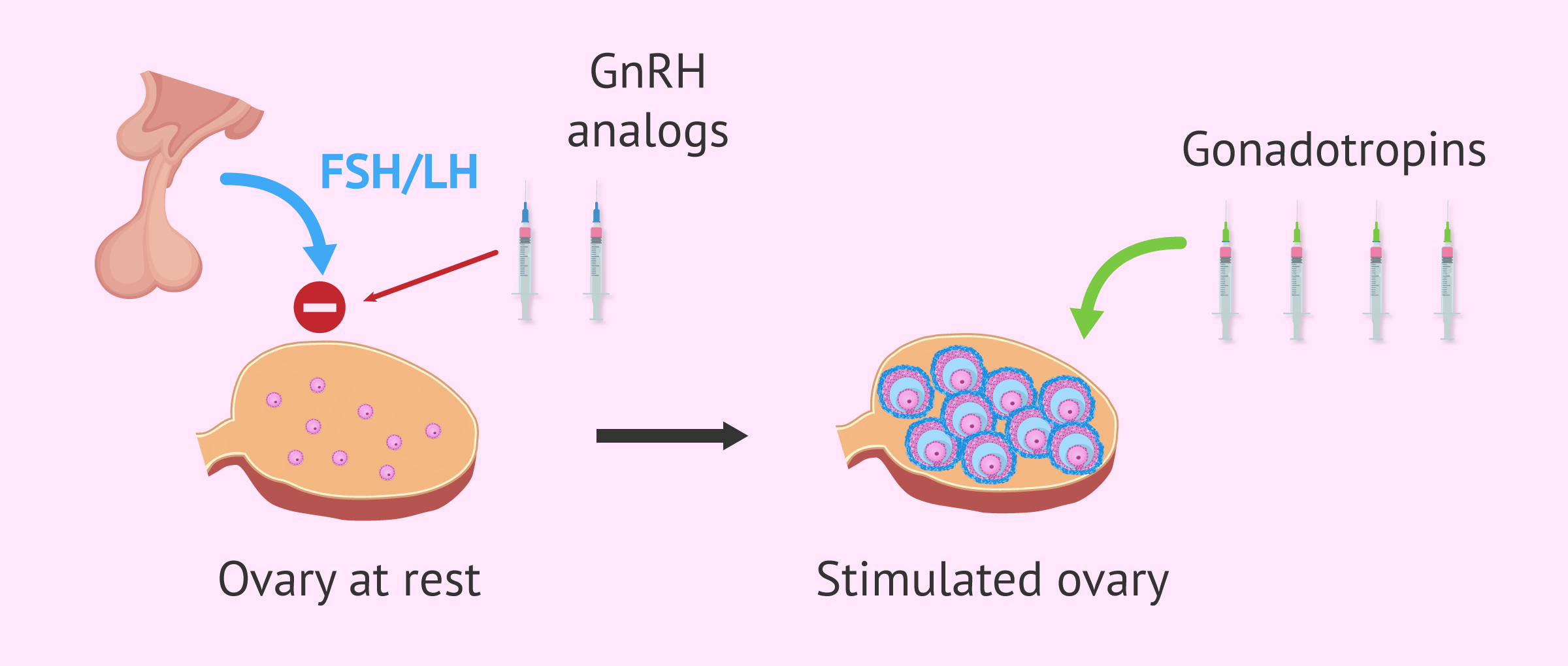One of the bases of assisted reproduction is to control the ovary, with the aim of producing a greater number of ovules and increasing the probability of pregnancy. This is achieved with the administration of a hormonal medication that has two purposes:
- GnRH analogs
- These hormones serve to slow down the pituitary gland and block the internal production of FSH and LH. Thus, it is possible to keep the ovaries at rest and then stimulate them exogenously.
- Gonadotropins
- These drugs contain the hormone FSH and, sometimes, also LH. Its objective is to cause multiple follicular development in a controlled manner.
Finally, the administration of a drug that will induce the final maturation of the ovules and ovulation will be necessary.
Read the full article on: Ovarian stimulation protocols – process, medications and symptoms ( 84).
By Daniel Sosa M.D., M.Sc. (gynecologist), Elena Martín Hidalgo M.D. (gynecologist), Gorka Barrenetxea Ziarrusta M.D., Ph.D. (gynecologist), Juan Antonio García Velasco M.D., Ph.D. (gynecologist), Marta Zermiani M.D., Ph.D. (gynecologist), Sara Salgado B.Sc., M.Sc. (embryologist), Silvia Azaña Gutiérrez B.Sc., M.Sc. (embryologist), Zaira Salvador B.Sc., M.Sc. (embryologist), Cristina Algarra Goosman B.Sc., M.Sc. (psychologist) and Michelle Lorraine Embleton B.Sc. Ph.D. (biochemist).
Last Update: 02/18/2022
